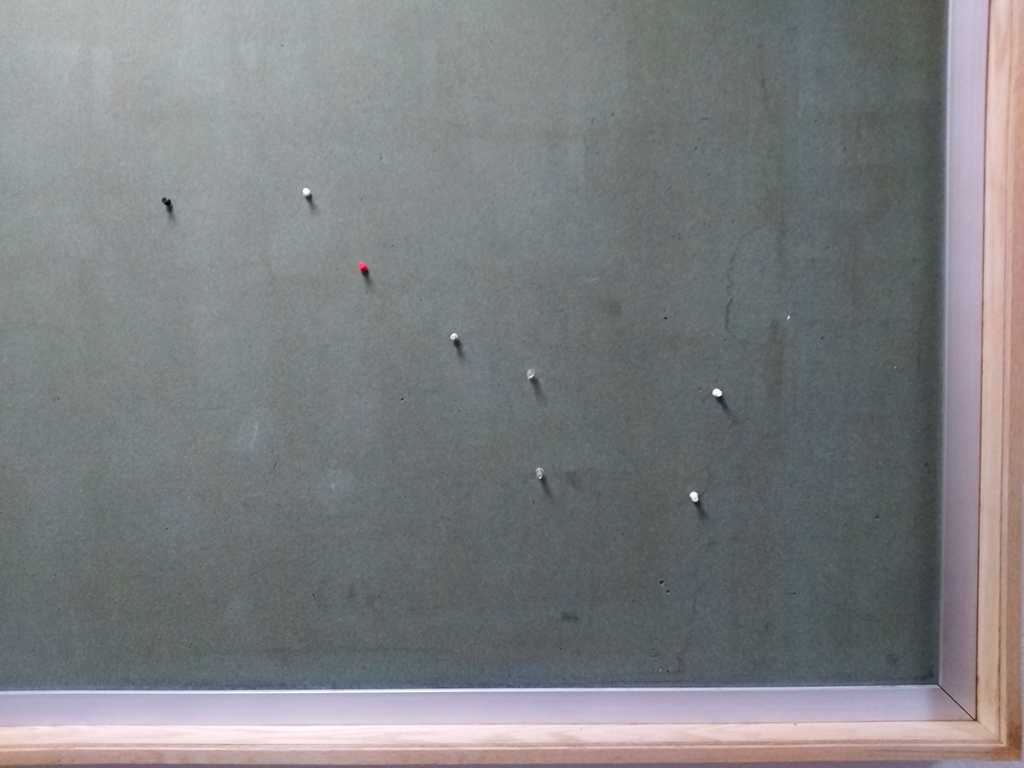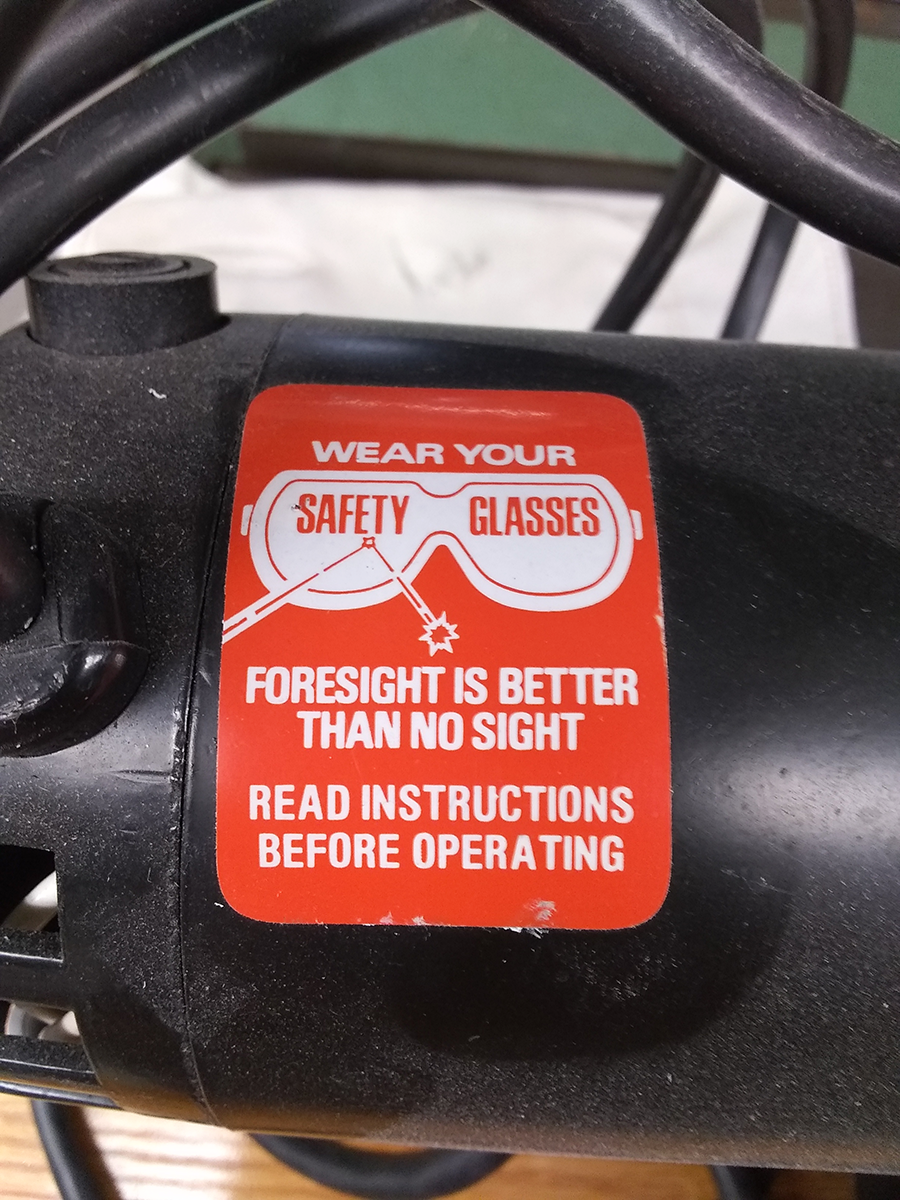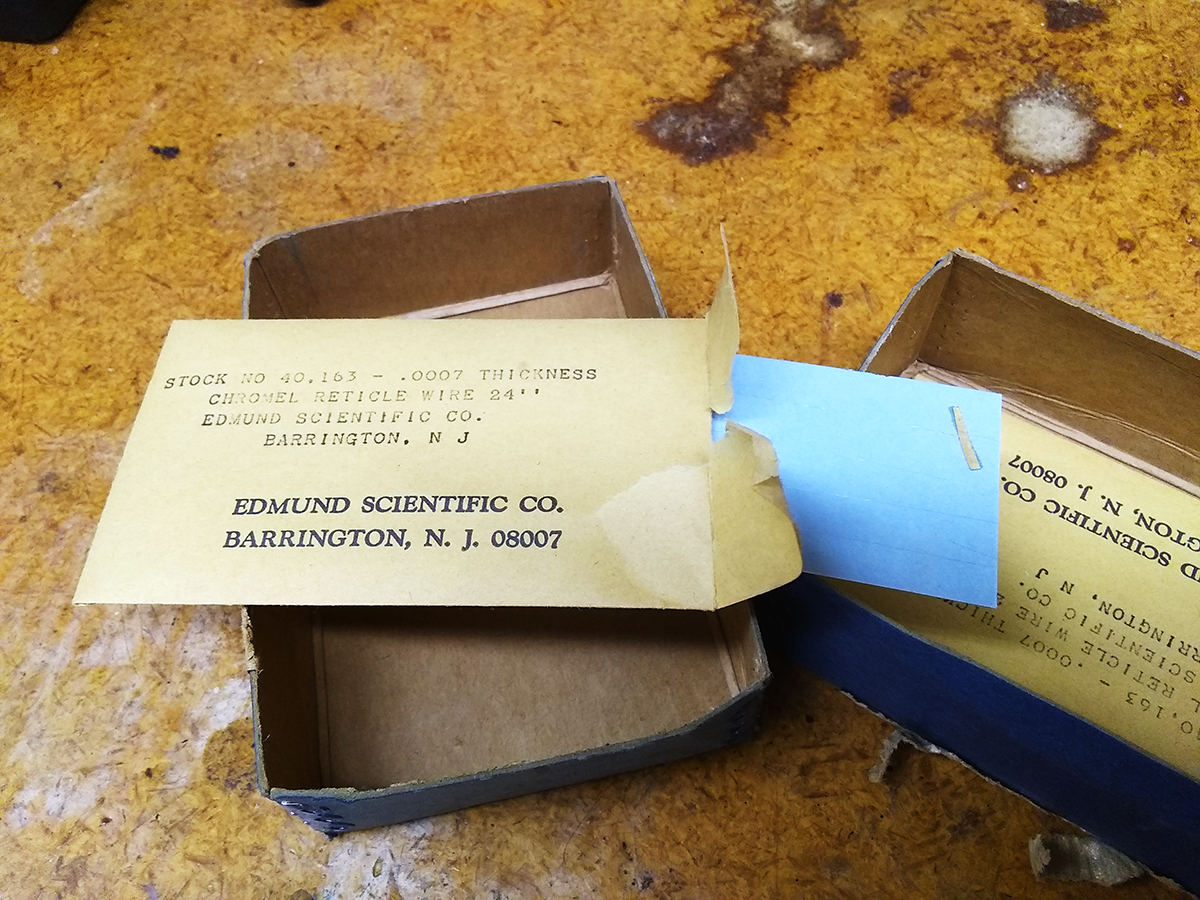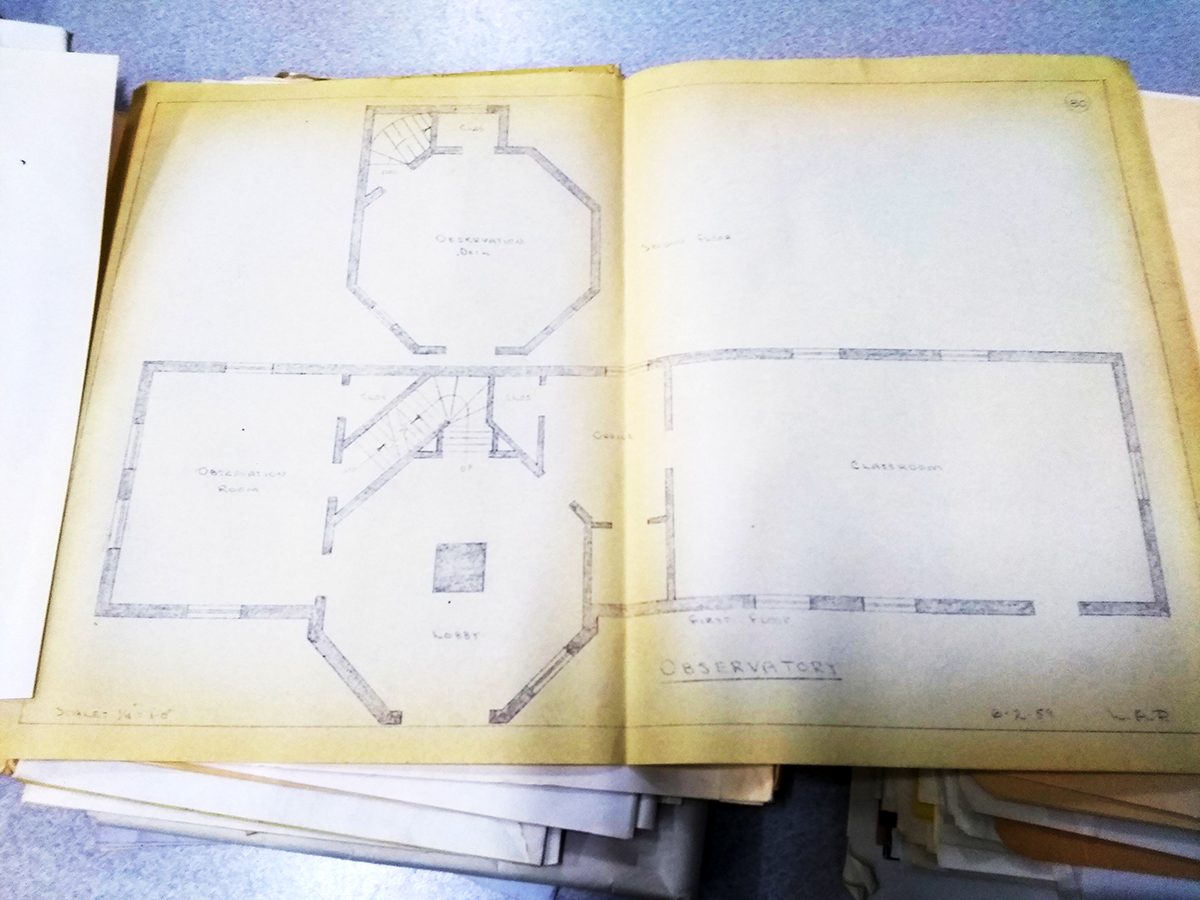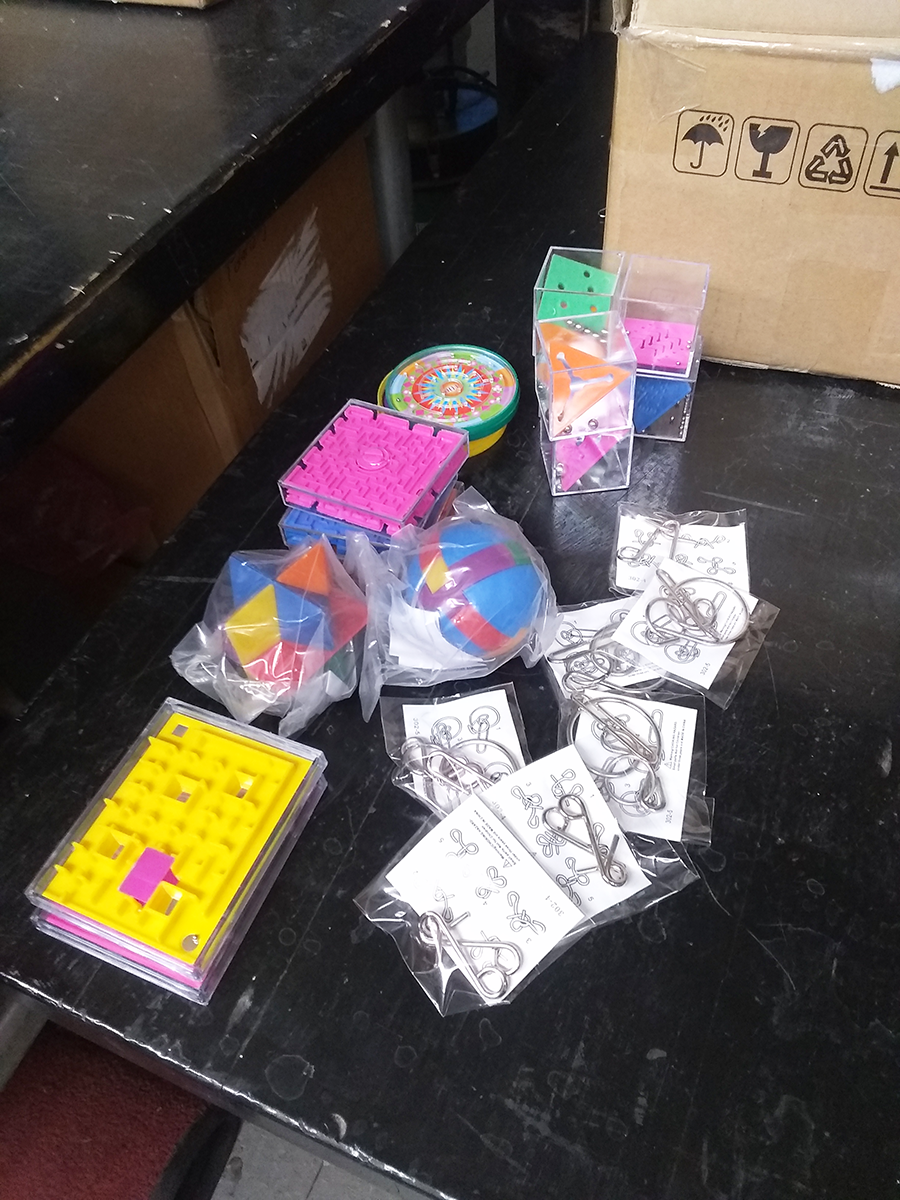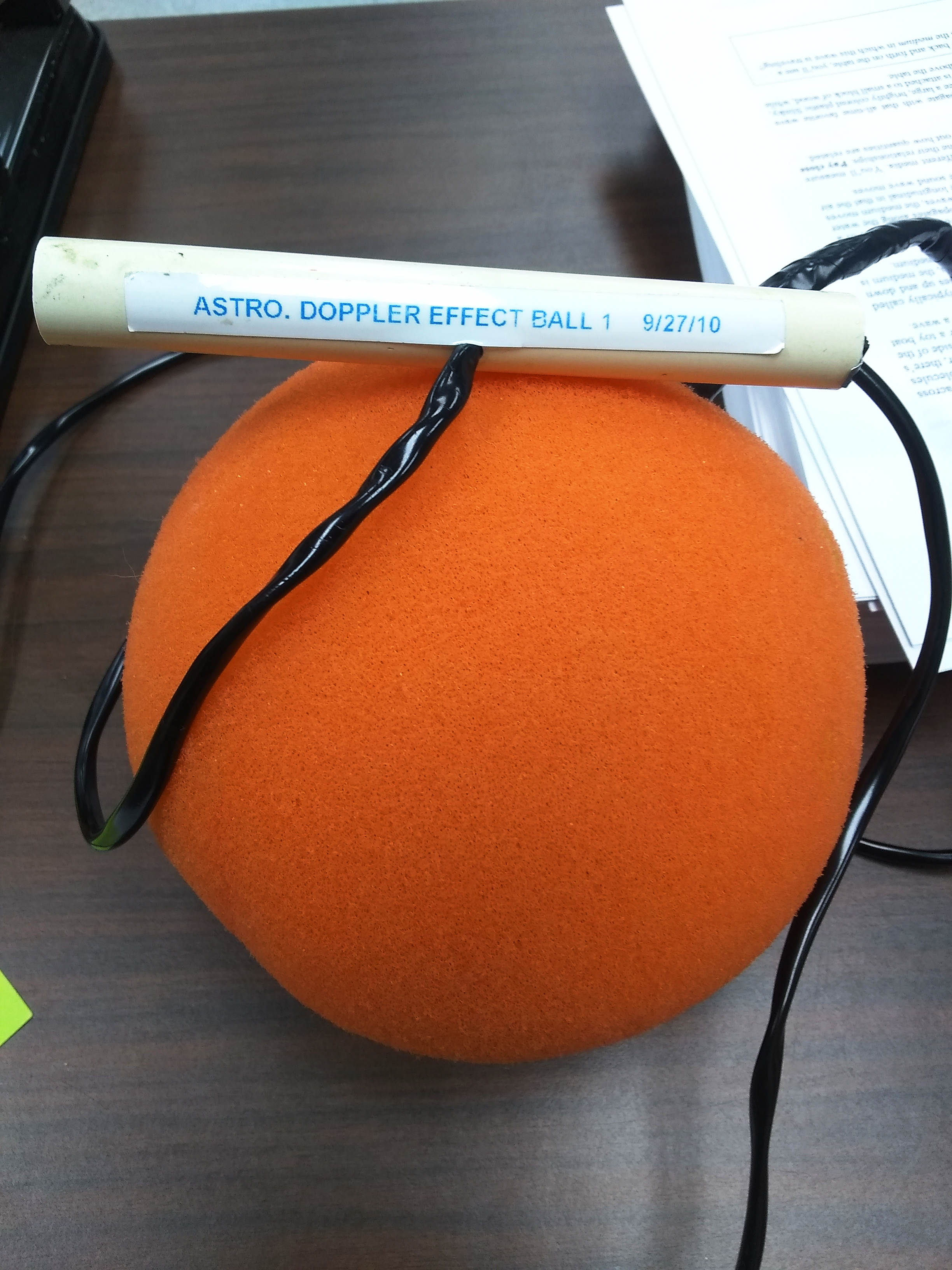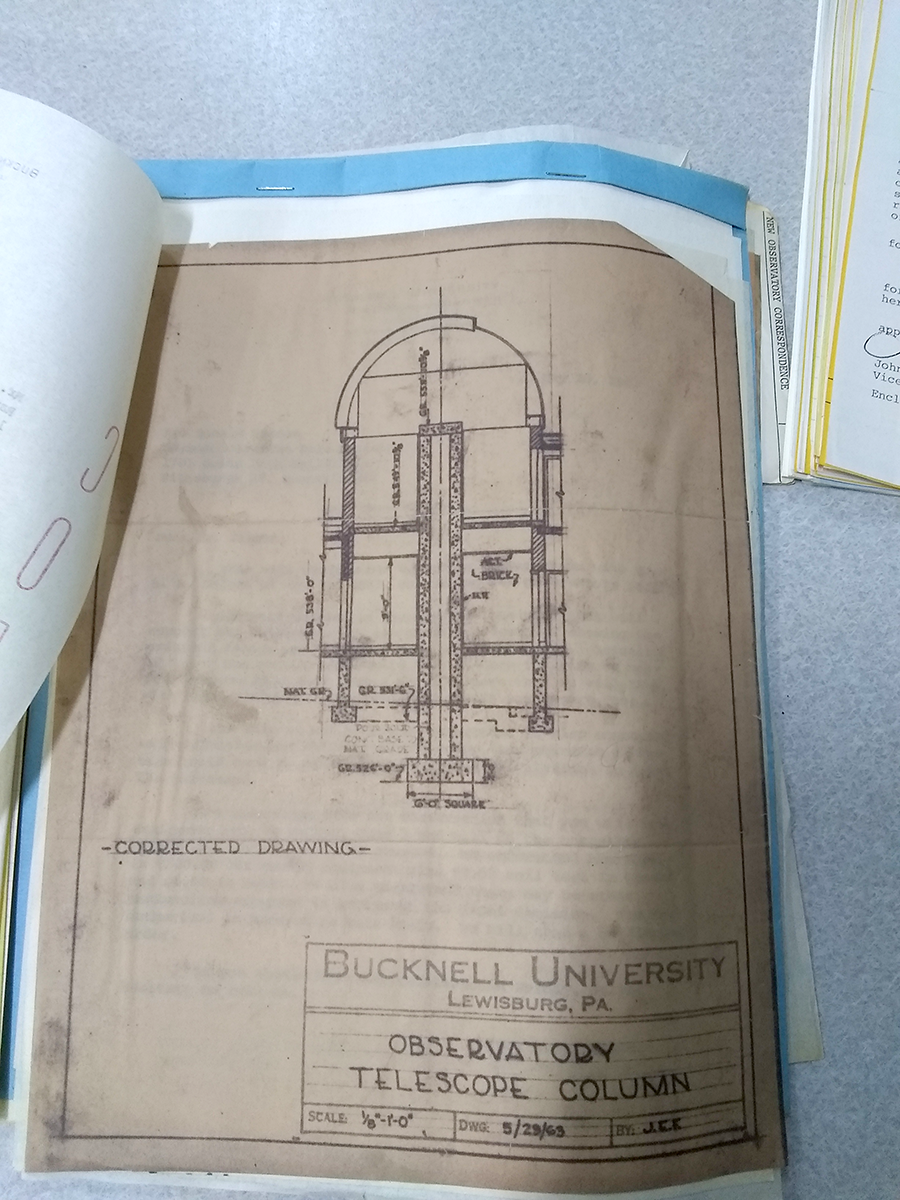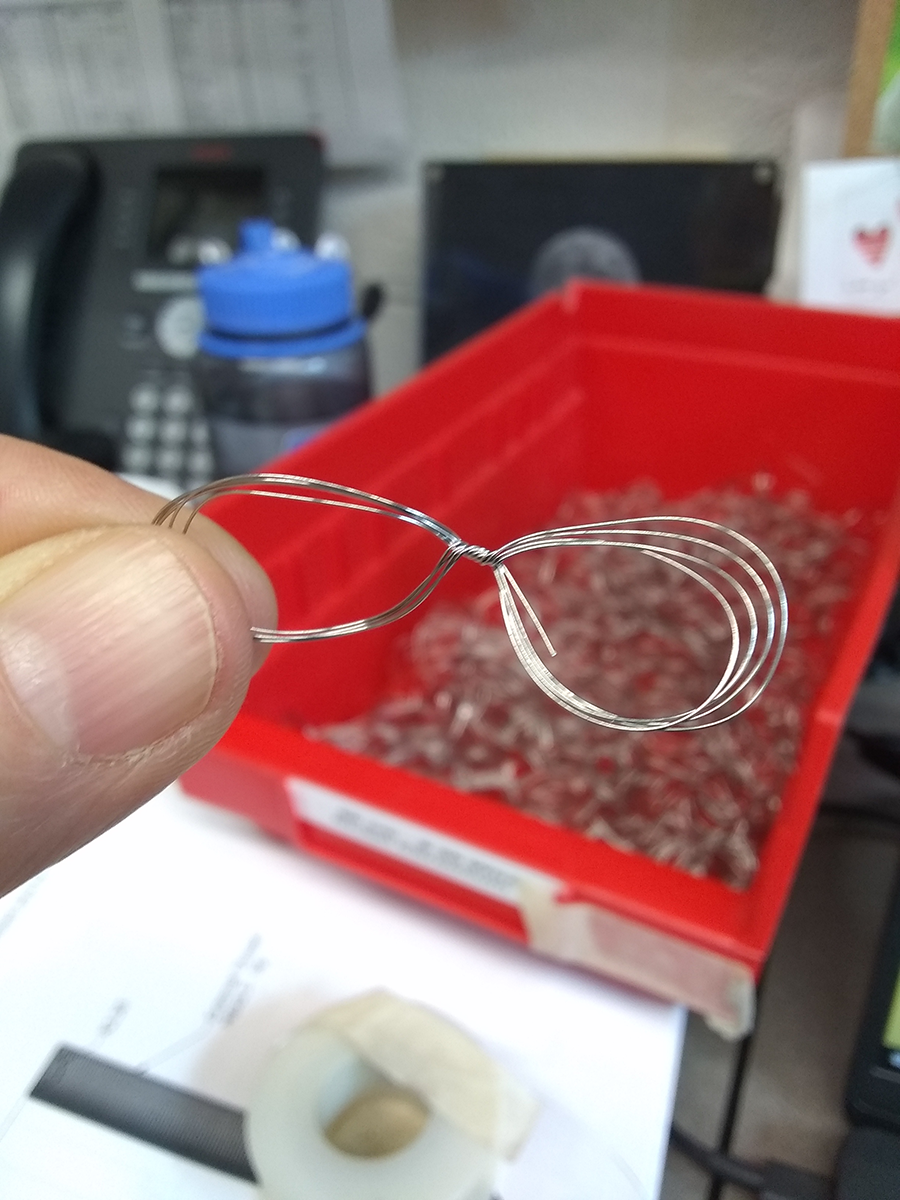
Hundreds of 50cm lengths of #30 AWG nichrome wire, all twisted up and ready to go? Must be toy kit time!
Nichrome – so named for its mostly-nickel-some-chrome alloy composition* – has a fairly high electrical resistance, high melting point, and the added bonus of its tendency to develop a chromium oxide finish which prevents wee bits from sputtering away when it gets blackbody-in-the-visible-spectrum hot. Hence why it’s used inside toasters as a resistive heating element.
* Depends on the specific alloy, technically. Can be as low as 35% nickel, but an 80-20 alloy is common.
